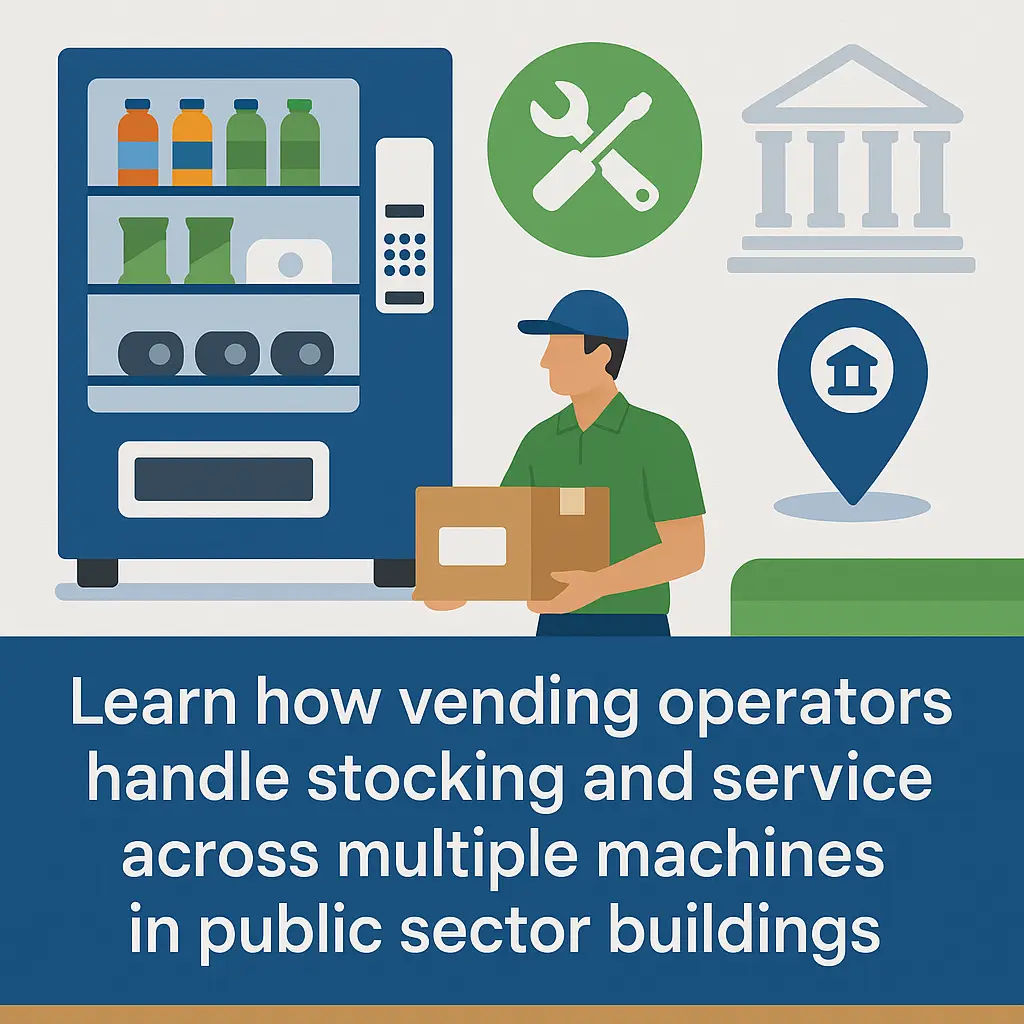Managing Vending Logistics in Public Facilities
Learn how vending operators handle stocking and service across multiple machines in public sector buildings.
Back to Vending for Public Buildings ResourcesLearn how vending operators handle stocking and service across multiple machines in public sector buildings.
Back to Vending for Public Buildings ResourcesCoordinated stocking schedules, centralized tracking, and efficient routes help maintain consistent service across multiple machines in different facility areas.
![]() Efficient logistics reduce downtime across multiple machines
Efficient logistics reduce downtime across multiple machines
![]() Scheduled service keeps public areas stocked and reliable
Scheduled service keeps public areas stocked and reliable
![]() Inventory tracking improves responsiveness to changing demand
Inventory tracking improves responsiveness to changing demand

Managing vending operations in public buildings requires careful coordination to ensure that every machine remains stocked, functional, and accessible. With facilities often spread across multiple floors or even separate buildings, efficient logistics reduce downtime and help avoid complaints about empty machines. Routes and schedules are typically planned to group nearby machines, minimizing travel time and improving service consistency.
Stocking strategies should account for peak usage times, such as breaks or public events. Machines in lobbies or high-traffic corridors often require more frequent visits, while those in less busy areas may follow a lighter schedule. For additional guidance on optimizing vending machine placement in public buildings, explore our after-hours service strategies.
Inventory management is central to vending logistics. Tracking product levels in real time allows teams to adjust stock before machines run low. Seasonal changes and public schedules influence demand, requiring flexible plans. For example, a courthouse may experience heavier traffic during specific sessions, while administrative buildings might follow predictable daily patterns.
Technology such as smart monitoring systems can alert teams when products are running out or when maintenance is needed. By using data to refine restocking cycles, operators keep shelves full and avoid unnecessary trips. Learn more about sustainable approaches to machine management in energy-efficient vending programs.
Public buildings often have strict security and operational procedures, making maintenance scheduling a key logistical factor. Service routes must fit within facility access windows and avoid interfering with daily operations. This often means working during early mornings or low-traffic periods to maintain machines without disrupting staff or visitors.
Establishing consistent schedules builds trust with facility managers and ensures smooth service. Documenting each service visit helps track performance and quickly address recurring issues. If you're looking to align machine accessibility with ADA standards, see our accessibility best practices for public facilities.
If you're exploring vending options for your business, Vending Exchange can help simplify the process. Delivery, Installation and Equipment is provided at no cost to you - vendors provide the machines, keep them stocked, and handle all servicing. Whether you need a provider or full-service management, just fill out the form on this page to get started.
Service routes are designed to group machines by location, reducing travel time and ensuring each area receives regular attention.
High-traffic machines are usually checked daily or several times per week to keep up with demand.
Inventory tracking helps ensure products stay available, reduces waste, and allows service teams to prioritize machines that need attention most.
Maintenance is typically scheduled during low-traffic periods, with clear access agreements to avoid interfering with staff or visitors.
Real-time monitoring or frequent route checks help identify low-stock machines quickly so teams can respond before it impacts users.
Seasonal events or changes in building occupancy often shift demand, requiring adjustments in stocking schedules and product mix.
Yes. Routes are often planned to include nearby buildings, allowing service teams to efficiently cover multiple locations in one trip.
Schedules are created in collaboration with facility teams to align with security protocols and access hours.
Tools like inventory monitoring systems, route planning software, and maintenance logs help coordinate service across many machines.
Consistent schedules, clear communication, and performance tracking help maintain smooth, dependable service over time.